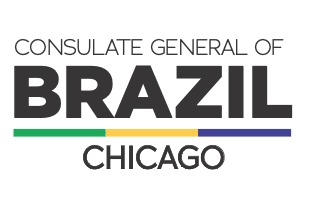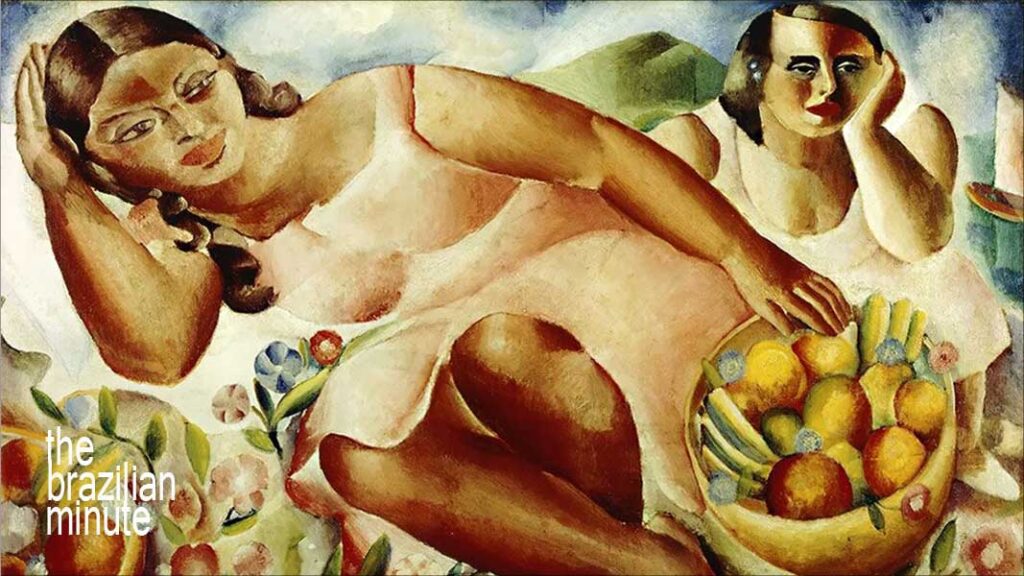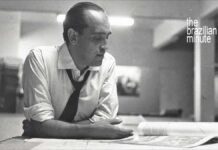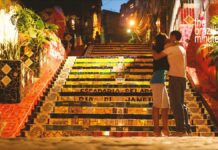
Brazil’s Centennial in 1922 found the nation on the cusp of a new, International era: One defined by its emerging presence in the full spectrum of the arts.
A Centennial Celebration for Sao Paulo’s Week of Modern Art has captured the interest and imagination of Brazilians everywhere. Let’s explore!
.

In celebration of Brazil’s Bicentennial year, 1822 – 2022
This week’s Brazilian Minute: A Centennial Celebration for Sao Paulo’s Week of Modern Art
Catch up with other Brazilian Minute episodes you may have missed!
Script from Audio:
Welcome to Brazilian Minute, brought to you by the Consulate-General of Brazil in Chicago and the Brazilian Foreign Ministry’s Cultural Department.
Brazil’s Bicentennial includes a centennial celebration for Sao Paulo’s Week of Modern Art in 1922.
Events were held at the landmark Municipal Theater, inviting poets, painters, musicians, writers, sculptors, architects, and philosophers to re-define Brazil’s cultural profile by combining Brazilian culture with American, Indigenous, and European influence.
Among these were the famed Brazilian composer, Heitor Villa Lobos, abstract artist Emiliano Di Cavalcanti, and poet Oswald de Andrade, who believed that Brazil should assimilate international influences to develop its own artistic identity. A sort of cultural cannibalism.
Although controversial, Sao Paulo’s revolutionary Week of Modern Art initiated an intensely productive period in the Brazilian arts, bringing a new generation of Brazilian creativity to the nation and the rest of the world.
Read and listen to new weekly episodes of The Brazilian Minute. It’s brought to you by the Consulate General of Brazil, in Chicago and the Brazilian Foreign Ministry’s Cultural Department.

More on: A Centennial Celebration for Sao Paulo’s Week of Modern Art
Entering The World Stage
1922. At 100 years, Brazil had shaken off its adolescence and was ready to make its mark in the world. Politically, the country had weaned itself away from Portugal’s Monarchal rule. Brazil was poised to develop a distinctive identity for itself.
Culture played a defining role in this transition. From colony to center of the Portuguese Empire, to the Democratic Republic of Brazil and its first Constitution.
Europe was the source of much of Brazil’s international influences. Never mind how unsuited Parisian fashion was for a tropical country, it was the trend in Rio and São Paulo.
The Arts – from paintings to literature, poetry, music, and sculpture – took many cues from the Motherland of Europe.
This included Modernist art, which reflected the broader philosophy of Modernism. A basic tenet was the desire to move away from tradition with purposeful – and thought-provoking – abstract creation.
Brazil’s Artistic Youth Movement of 1922
Many of Brazil’s young early-20th century artists, poets, and authors picked up on this emerging trend. Several studied Modernism in Europe and brought these teaching home with them. São Paulo’s Week of Modern Art was created by this group and perhaps influenced by 1913’s International Exhibition of Modern Art which took place in New York City.
The primary Organizers of the event were Emiliano Di Cavalcanti, Mário de Andrade, Manuel Bandeira, and Oswald de Andrade.
The guiding idea for this Modern Art Week was to illustrate a newfound sense of Brazilian individuality. Further, to ensure a place for Brazilian artists of all kinds to explore a cultural identity for their country.
São Paulo’s Week of Modern Art was met with predictable mainstream criticism, and in truth, the participants who launched the movement disbanded into separate groups.
Four Takeaways from São Paulo’s Week of Modern Art
Disliked From The Start
São Paulo’s most prestigious scribe disliked the idea, five years before it happened. The city’s #1 newspaper O Estado de S. Paulo, published Monteiro Lobato’s article titled ‘Paranoia or Mystification” in December of 1917. Boldly, the author defended the principles of classical art.2. Controversy Creates Movement
Controversy Creates Momentum
Both Mario and Oswald de Andrade (not related), were also writers and they pushed back against Lobato’s article, drawing funding contributions and support from São Paulo’s Elite. Many of this Oligarchy were wealthy owners of coffee plantations, and parents of many of the young artists to be included in São Paulo’s Week of Modern Art exhibition.
Short-Term Setbacks and Long-term Successes
Although Brazil’s Modern Art Week was not a public success, it proved to be a seminal moment for Brazilian culture. Oswald de Andrade proposed that Brazil take inspiration from other countries and cultures, then recreate what it takes into something uniquely Brazilian.
This simple statement has come to be a guiding force in many aspects of Brazilian popular culture today. Especially in poetry, literature, and music.
Sao Paulo’s Week of Modern Art: Brazil’s Music
Of these, perhaps Brazilian music is the best mainstream example. The first example came seven years after São Paulo’s Week of Modern Art concluded. It came in the form of a foreigner. She was an immigrant from Portugal named Carmen Miranda. She would go on to become Brazil’s first superstar on stage, in film, and at the microphone.
By the 1950s, Oswald de Andrade’s guiding principle was ready to redefine popular music in Brazil. Part slowed-down Samba, part West Coast jazz, Bossa Nova was the stepchild of his theory. Antonio Carlos Jobim and Joao Gilberto borrowed what they needed from each to create something uniquely Brazilian. And aren’t we thankful for that?
1967
But perhaps the greatest example of de Andrade’s contemporary “cultural cannibalism” isn’t a person or a thing. It is a specific period of time. 365 days, beginning on January 1, 1967.
1967 was the year that saw the birth of Tropicália and its desire to recreate the energy of 1922 in art and music. It marked the beginning of careers for Caetano Veloso, Gilberto Gil, Gal Costa, and Brazilian American Rita Lee. 1967 brought a pivotal moment to Milton Nascimento with his first recording deal for his new approach to Brazilian pop music.
Today and Tomorrow
Today, the vibrations created in mid-February 1922 are still felt throughout Brazilian culture. They expand outward to every corner of the world.
Just as intended.
Music, Travel, Friends and Fun! 2022 marks Connect Brazil’s 25th year.
A Centennial Celebration for Sao Paulo’s Week of Modern Art
Did you enjoy ’A Centennial Celebration for Sao Paulo’s Week of Modern Art’? If you did, why not join us at Connect Brazil?
Sign up for our emails on Brazilian music, travel, friends, and fun. Listen to our ‘always live’ streaming station and streaming music channels, always free. Visit us on Facebook, and Twitter, and browse our Lifestyle Directory for Brazilian events coast to coast.








